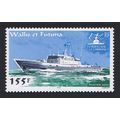Ventnor, Isle of Wight - from West (Flowers Brook) - Dixon postcard 1961 pmk
- Condition : Used
- Dispatch : 2 Days
- Brand : None
- ID# : 180707692
- Quantity : 1 item
- Views : 250
- Location : United Kingdom

- Seller : justthebook (+1703)
- Barcode : None
- Start : Mon 13 May 2019 17:16:00 (EDT)
- Close : Run Until Sold
- Remain : Run Until Sold
Checks/Cheques
 for 1 item(s) edit
for 1 item(s) edit
Shipping Calculator
More Listings from This Seller view all
Seller's Description
- Postcard
- Picture / Image: Ventnor from the West, Isle of Wight...view here from Flowers Brook
- Publisher: J Arthur Dixon (IW 1504)
- Postally used: yes
- Stamp: 2&half d. red
- Postmark(s): Shanklin 1961 wavy line
- Sent to: Reigate, Surrey
- Notes / condition:
Please ask if you need any other information and I will do the best I can to answer.
Image may be low res for illustrative purposes - if you need a higher definition image then please contact me and I may be able to send one. No cards have been trimmed (unless stated).
------------------------------------------------
Postage & Packing:
Postage and packing charge should be showing for your location (contact if not sure).
No additional charges for more than one postcard. You can buy as many postcards from me as you like and you will just pay the fee above once. Please wait for combined invoice. (If buying postcards withother things such as books, please contact or wait for invoice before paying).
Payment Methods:
UK - PayPal, Cheque (from UK bank) or postal order
Outside UK: PayPal ONLY (unless otherwise stated) please. NO non-UK currency checks or money orders (sorry).
NOTE: All postcards are sent in brand new stiffened envelopes which I have bought for the task. These are specially made to protect postcards and you may be able to re-use them. In addition there are other costs to sending so the above charge is not just for the stamp!
I will give a full refund if you are not fully satisfied with the postcard.
----------------------------------------------
Text from the free encyclopedia WIKIPEDIA may appear below to give a little background information (internal links may not work) :
*************
Ventnor (/ˈvɛntnər/) is a seaside resort and civil parish[2] established in the Victorian era on the south coast of the Isle of Wight, England. It lies underneath St Boniface Down (which, at 241 metres (791 feet), is the highest point on the Isle of Wight), and is built on steep slopes and cliffs leading down to the sea. The higher part is referred to as Upper Ventnor (although officially it is Lowtherville); the lower part, where most of the amenities are located, being known as Ventnor. Ventnor is sometimes understood as including the coastal villages of St. Lawrence to one side and Bonchurch to the other.
The sheltered location on the cliff of the island's south coast means the area experiences a microclimate with more sunny days than much of the British Isles, and fewer frosts. This has allowed many species of subtropical plant to be successfully planted and maintained. Ventnor Botanic Garden is particularly notable.
The varied geomorphology of the area in many ways defines the town. A significant area is built on clay, which suffers from serious landslip; the ground at Ventnor is notoriously unstable and many buildings and amenities have been lost to subsidence or cliff-falls. There is a local expression: "We live near the sea and are getting nearer every day." This has led to considerable concern and study of the situation.[3][4][5][6] This is the subject of displays at the Isle of Wight Coastal Visitors Centre in Ventnor.[7] One nearby Site of Special Scientific Interest is known as the Landslip.
Above the town is a geological fault known as the Graben, which marks the top of the series of landslips on which Ventnor is built. This fault moves regularly, and has caused destruction of numerous buildings over the years, serious cracking to the road that crosses it, and repeated disruption to the town's utilities supplied by pipes and cables that cross the fault. The latest evidence can be seen at the site of the former bus stop in Ocean View Road, where a 5"by 3" vent has opened up along the geological fault.[8]
Three miles off the coast of Ventnor, the seabed forms a long parallel ridge rising to within 15 metres (49 ft) of the surface. The action of the sea rushing up the Channel and being forced between the island and this ridge has carved out a deep narrow channel known as St. Catherine's Deep.
The town grew from a small fishing hamlet in the 19th century between the two villages of Bonchurch to the east and St Lawrence to the west. Whereas each of those villages was a parish in its own right, the area now occupied by Ventnor was divided between the two larger parishes of Godshill and Newchurch to the north. Charles Dickens lived nearby for some time. However, it was with the coming of the Isle of Wight Railway in 1866 that the town became both a tourist and a health resort. The fresh Channel air and warm climate were considered to be very beneficial to the sufferers of tuberculosis. Several sanatoriums were established in Ventnor for those suffering from the disease. The Isle of Wight Railway at one time ran a non-stop train from Ryde to Ventnor which was named 'The Invalid Express' specifically to rush consumptive patients to their treatment at Ventnor. One train famously completed the journey in a little over twenty minutes.[9] The town reached its zenith in the inter-war period of the 1930s with regular steam packets operating between Southsea and the town's pier. The sandy beach was ideal for bathing, and is still popular today, although it is somewhat smaller than comparable tourist beaches at nearby Sandown and Shanklin. Victorian era hotels in the town's suburbs and near the sea, such as Ventnor Towers Hotel, remain popular with tourists.
Ventnor railway station was the terminus of the Isle of Wight Railway (later called the Island Line) from Ryde through Sandown and Shanklin, and it brought many visitors to the town. Ventnor West railway station was the terminus of the Isle of Wight Central Railway line from Cowes through Newport. Both railway stations suffered from being well away from the town centre, necessitating a road journey for most travellers to reach their destination. Ventnor West railway station was closed in 1952, long before the closures ordered by Dr Beeching. Ventnor railway station was closed in 1966, as part of a plan which also saw the remaining Ryde - Shanklin line electrified. Thereafter the town suffered a period of economic decline, from which it has not fully recovered.
Between 2004 and 2010 a connecting Rail Link bus route 16, run by Wightbus, ran from St Lawrence and Ventnor to Shanklin, making the combined bus and rail journey to and from Ventnor easier during that period.[10]
Listing Information
| Listing Type | Gallery Listing |
| Listing ID# | 180707692 |
| Start Time | Mon 13 May 2019 17:16:00 (EDT) |
| Close Time | Run Until Sold |
| Starting Bid | Fixed Price (no bidding) |
| Item Condition | Used |
| Bids | 0 |
| Views | 250 |
| Dispatch Time | 2 Days |
| Quantity | 1 |
| Location | United Kingdom |
| Auto Extend | No |





















